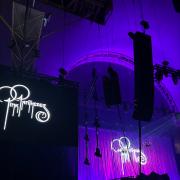
A dramatic interpretation of ‘The Crucible’ kicks off Arthur Miller season in London.
Arthur Miller’s classic tale of conspiracy, corruption and convention has perhaps no greater relevance than in today’s modern world. It’s themes of mass hysteria resonate particularly with a society still reeling from the scare-mongering used by political campaigners in recent elections. It may come as no surprise then that Miller wrote his seminal 1953 play as an allegory for the McCarthyism that gripped the US in the 1950s.
The play focuses on John Proctor (Will Conyers), Miller’s infamous anti-hero who, in the midst of the 1692 witch-hunt, finds himself entangled in the madness when his wife, Elizabeth (Elysia Sanders), is accused. His fall from grace is gripping viewing and climaxes in glorious soliloquies made famous by Daniel Day-Lewis in the 1996 film. It is a chilling piece of theatre, combining weighty dialogue with dark humour, and is extremely taxing on both the actors involved and the audience due to its combination of physical theatre and length; a recent Yaël Farber production at the Old Vic clocked in at three and a half hours. This portrayal of a society in disintegration is furthered in Hampton and Lady Eleanor Holles School’s vivid depiction of the close-knit community frequently spying on each other – a chorus is used to transition between acts with a new interpretation of the accusations.
It seems strange that such a young cast should be attempting a play with such mature themes. However, it comes at a time where productions of Miller’s plays are in plentiful supply. London has always had a more avid following of Miller’s work than the playwright’s native New York, and this production marks the beginning of ‘Arthur Miller Season’ in London; many theatres are choosing to stage his works in an almost festival-like enthusiasm, with classics such as ‘Death of a Salesman’ and ‘All My Sons’ paired with lesser known works such as the rarely performed ‘The American Clock’. Hampton School’s production will be no exception to the calibre and focus required of all Miller’s works and is guaranteed to delight and shock audiences in equal measure.









![Max Cooper presents Seme, Barbican Centre (Live review) [Joseph Oxborrow, KGS]](/resources/images/128x89/1x/18025924.jpg)
![Max Cooper presents Seme, Barbican Centre (Live review) [Joseph Oxborrow, KGS]](/resources/images/180x180/1x/18025924.jpg)
















